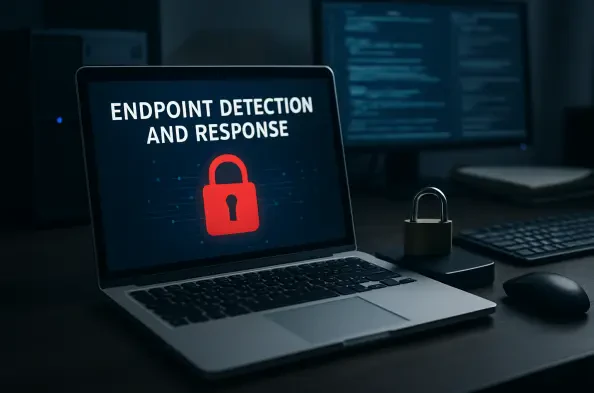In an era where cybersecurity threats are becoming increasingly sophisticated, a newly documented endpoint detection and response (EDR) evasion technique has emerged as a significant concern for organizations worldwide, posing a serious risk to system security. This tool, known for its stealthy approach, targets critical vulnerabilities in Windows systems to neutralize security software, leaving systems exposed to undetected threats. By exploiting the Windows Filtering Platform (WFP), it disrupts the essential cloud connectivity that modern EDR and antivirus solutions rely on for real-time threat intelligence and response capabilities. This development underscores a growing challenge for security teams: the architectural weaknesses in widely used protective tools that can be leveraged by adversaries with minimal traces. As cyber attackers refine their methods to bypass even the most advanced defenses, understanding this latest evasion tactic becomes imperative for safeguarding sensitive data and maintaining robust endpoint security in an ever-evolving threat landscape.
1. Unveiling a Stealthy Threat
A groundbreaking technique has surfaced in the cybersecurity realm, focusing on disrupting the core functionality of EDR systems without resorting to traditional methods like process termination or kernel-level interference. This sophisticated network communication blocker leverages the Windows Filtering Platform to sever the vital connection between security software and cloud-based services. By doing so, it prevents EDR tools from transmitting telemetry data or receiving critical updates, effectively blinding them to ongoing threats. The tool’s ability to operate dynamically, without leaving persistent traces, marks a significant departure from earlier evasion strategies that often left detectable forensic artifacts. Security professionals are now faced with the challenge of identifying and countering a method that operates under the radar, exploiting inherent design dependencies in modern security architectures. This development highlights the urgent need for updated defense mechanisms to address such covert tactics that can compromise endpoint protection with alarming efficiency.
The implications of this evasion technique extend far beyond a mere technical exploit, as they reveal a fundamental flaw in the reliance of EDR solutions on continuous network connectivity for optimal performance. When isolated from cloud resources, many of these tools lose their ability to perform real-time threat analysis or enable remote management, rendering them ineffective against sophisticated attacks. The tool in question targets specific processes associated with well-known security solutions, systematically blocking both outbound and inbound communications. This dual-layer isolation ensures that affected systems cannot upload critical data to security operations centers or receive commands for automated responses. As a result, organizations depending heavily on cloud-based detection capabilities find themselves at heightened risk, with local detection mechanisms often insufficient to mitigate threats independently. This scenario emphasizes the importance of reevaluating security postures to address such network-dependent vulnerabilities.
2. Mechanics of the Attack Process
Delving into the operational framework of this EDR evasion tool reveals a meticulously structured seven-phase execution sequence designed for maximum impact with minimal detection. The process begins with a verification of administrator privileges through Windows API calls, ensuring the necessary access to manipulate system functions. Following this, an extensive discovery phase identifies active EDR processes by cross-referencing running applications against a predefined list of targets, including prominent solutions like SentinelOne and Windows Defender. Once identified, the tool establishes a dynamic session within the Windows Filtering Platform, setting high-priority filtering rules to block network traffic. This strategic isolation targets specific security processes, preventing them from communicating with external servers for updates or telemetry, thus crippling their core functionalities. Such a methodical approach underscores the advanced nature of this threat, challenging conventional security measures.
Further examination of the attack mechanics shows how the tool creates bidirectional network filters to enforce comprehensive isolation of EDR processes. These filters block both the transmission of telemetry data to cloud servers and the receipt of command-and-control communications essential for threat mitigation. Simultaneously, efforts are made to disable associated services, halting automatic restarts, scheduled scans, and background monitoring activities. This multi-pronged strategy ensures that security solutions remain incapacitated, unable to alert administrators or execute protective measures. The resulting impact is profound, as security teams lose visibility into endpoint activities, and automated response mechanisms are rendered obsolete. By exploiting the dependency on network connectivity, this technique exposes a critical weakness in modern EDR deployments, urging a reevaluation of how security tools are architecturally designed to function under adverse conditions.
3. Mitigation and Defense Strategies
Addressing the risks posed by this advanced EDR evasion technique requires a proactive approach to monitoring and fortifying system defenses against network-based attacks. Security teams are advised to implement real-time monitoring of Windows event logs, focusing on specific Event IDs such as 5441, 5157, and 5152, which can indicate WFP filter creation. Establishing redundant communication channels for EDR telemetry ensures that data can still be transmitted even if primary pathways are disrupted. Additionally, implementing local event caching with delayed transmission capabilities can preserve critical information for later analysis. Utilizing Windows protected process mechanisms is also recommended to prevent unauthorized manipulation of security services. These combined measures aim to reduce the window of vulnerability, providing a layered defense against tactics that exploit connectivity dependencies and administrative access.
Beyond immediate detection and response tactics, organizations must consider broader architectural adjustments to mitigate the risks of similar evasion techniques in the future. Recognizing that this particular tool requires administrator-level privileges offers a potential safeguard, as limiting such access can thwart initial execution. It should also be noted that EDR solutions fortified by kernel-level network drivers remain resistant to this specific attack vector, suggesting a path for enhancing software resilience. Investing in endpoint security solutions that maintain robust local detection capabilities, independent of cloud connectivity, can further diminish the impact of network isolation. By adopting a multi-faceted strategy that encompasses vigilant monitoring, access control, and resilient design, organizations can better prepare to counter sophisticated threats that target the foundational elements of modern security tools, ensuring continuity of protection in diverse threat scenarios.
4. Reflecting on Evolved Threats
Looking back, the emergence of this network communication blocker marked a pivotal moment in the ongoing battle against cyber threats, exposing critical dependencies within EDR frameworks. Its ability to dynamically isolate security tools without persistent traces challenged the assumptions underpinning cloud-reliant defenses at that time. Security teams had to quickly adapt, focusing on strengthening local detection mechanisms and enhancing monitoring of system-level activities. The incident served as a stark reminder of the need for continuous evolution in cybersecurity practices to keep pace with adversaries exploiting architectural flaws. As the threat landscape shifted, the lessons learned from this evasion technique became foundational in rethinking endpoint protection strategies.
Moving forward, the focus shifted to actionable enhancements in security architectures to prevent similar exploits. Developing EDR solutions with reduced reliance on constant network connectivity emerged as a priority, alongside stricter controls over administrative privileges. Integrating advanced behavioral analysis and anomaly detection at the endpoint level offered a promising avenue to identify covert threats early. Encouraging collaboration between security vendors and organizations to share insights on emerging evasion tactics also became essential. By building on the challenges posed by such sophisticated tools, the cybersecurity community aimed to forge more resilient defenses, ensuring that future innovations in threat detection and response remained one step ahead of evolving adversarial techniques.






